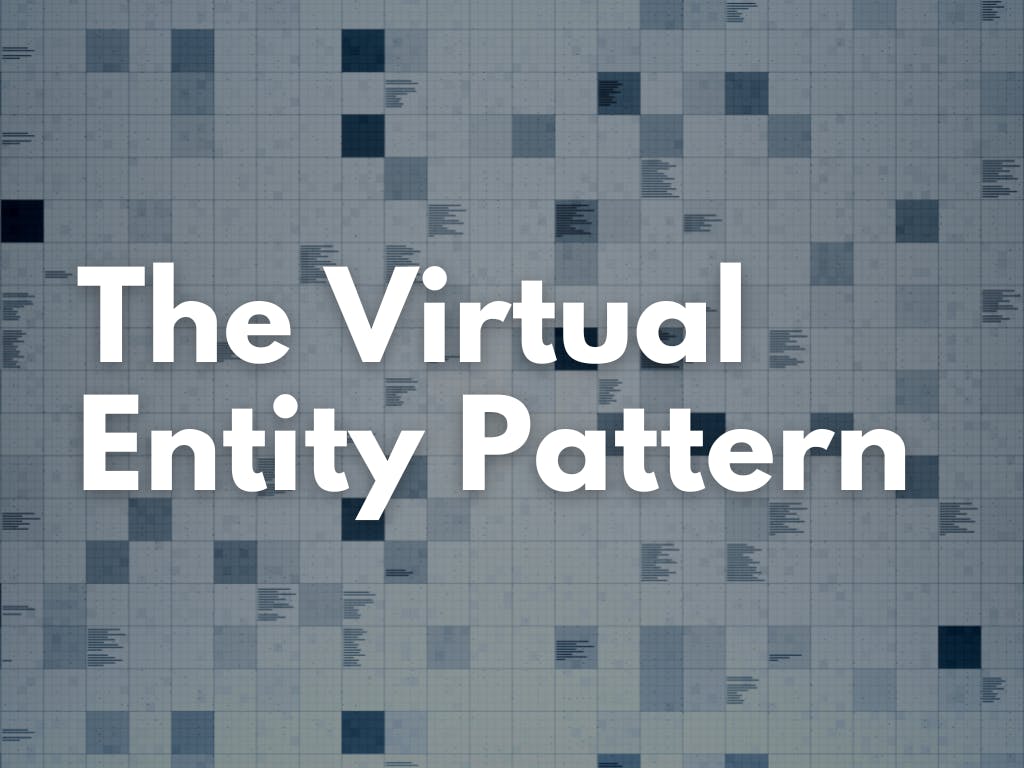As businesses grow and evolve, they often face the challenge of integrating and accessing data from multiple sources. The Virtual Entity pattern is a software design pattern that simplifies data access across multiple sources by creating a virtual representation of the data.
The Virtual Entity Pattern
The Virtual Entity pattern provides a way to abstract data from different sources and present it as a single entity, making it easier for developers to access and manipulate the data. At a high level, the Virtual Entity pattern involves creating a virtual representation of the data, with a common interface for accessing and manipulating the data. The data from different sources is abstracted and presented as a single entity, allowing developers to work with the data as if it were stored in a single location, even though it may be distributed across multiple systems.
Virtual Entity Data Model
To implement the Virtual Entity pattern, a data model is required to represent the virtual entity configuration. Here is a simplified data model:
Virtual Entity Configuration
-----------------------------
+ id : int (primary key)
+ entity_name : string
+ data_sources : string[]
+ mappings : Mapping[]
This data model represents the virtual entity configuration itself, with an ID, entity name, data sources, and mappings. Mappings are used to represent how the fields from each data source map to the fields in the virtual entity.
- id: This field represents the unique identifier for a particular virtual entity configuration. It is typically an integer and serves as the primary key for the table.
- entity_name: This field represents the name of the virtual entity. It is a string that identifies the entity and differentiates it from other entities.
- data_sources: This field is an array of strings that represents the different data sources from which the data is being fetched. Each element in the array corresponds to a data source that contains data relevant to the virtual entity.
- mappings: This field is an array of Mapping objects that represent the field mappings between the source fields in the data sources and the target fields in the virtual entity. Each Mapping object has two fields - source_field and target_field.
Cache Configuration
In addition to the data model, the Virtual Entity pattern can also include cache configuration. Caching can help to improve the performance of applications by reducing the amount of time it takes to retrieve data from multiple sources. By caching the data in memory, subsequent requests can be served faster, reducing the amount of time spent waiting for the data to be retrieved from the data sources.
Cache configuration can be added to the Virtual Entity pattern by specifying the caching mechanism to be used, such as Redis or Memcached. The configuration can also include details such as the cache expiry time, the maximum size of the cache, and the caching strategy to be used.
Benefits of the Virtual Entity Pattern
The Virtual Entity pattern provides several benefits for developers and businesses alike. First, it simplifies data access across multiple sources, reducing the complexity of the development process. Second, it can improve the performance of applications that need to access data from multiple sources, by providing a single interface for accessing the data.
The Virtual Entity pattern is a powerful tool for simplifying data access across multiple sources. By creating a virtual representation of the data and presenting it as a single entity, the Virtual Entity pattern makes it easier for developers to access and manipulate the data they need. By using a simple data model to represent the virtual entity configuration, businesses can improve the efficiency and performance of their data systems, while also saving time and money.
If you're working on an application that involves data from multiple sources, consider implementing the Virtual Entity pattern to simplify your development process and improve your application's performance.
